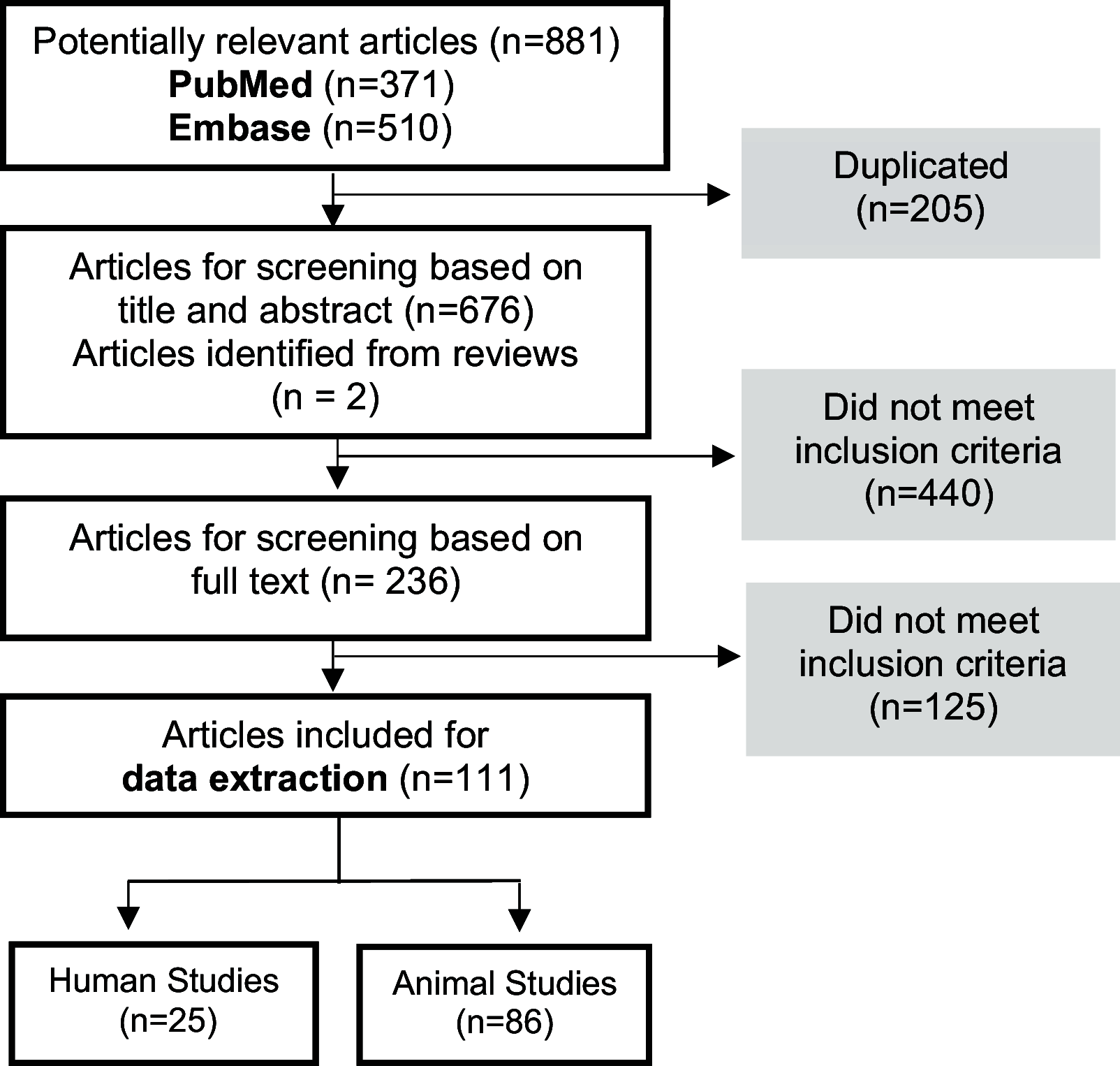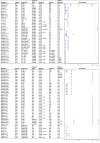Exposure to per- and Polyfluoroalkyl Substances and Markers of Liver Injury: A Systematic Review and Meta-Analysis
- PMID: 35475652
- PMCID: PMC9044977
- DOI: 10.1289/EHP10092
Exposure to per- and Polyfluoroalkyl Substances and Markers of Liver Injury: A Systematic Review and Meta-Analysis
Abstract
Background: Experimental evidence indicates that exposure to certain pollutants is associated with liver damage. Per- and polyfluoroalkyl substances (PFAS) are persistent synthetic chemicals widely used in industry and consumer products and bioaccumulate in food webs and human tissues, such as the liver.
Objective: The objective of this study was to conduct a systematic review of the literature and meta-analysis evaluating PFAS exposure and evidence of liver injury from rodent and epidemiological studies.
Methods: PubMed and Embase were searched for all studies from earliest available indexing year through 1 December 2021 using keywords corresponding to PFAS exposure and liver injury. For data synthesis, results were limited to studies in humans and rodents assessing the following indicators of liver injury: serum alanine aminotransferase (ALT), nonalcoholic fatty liver disease, nonalcoholic steatohepatitis, or steatosis. For human studies, at least three observational studies per PFAS were used to conduct a weighted -score meta-analysis to determine the direction and significance of associations. For rodent studies, data were synthesized to qualitatively summarize the direction and significance of effect.
Results: Our search yielded 85 rodent studies and 24 epidemiological studies, primarily of people from the United States. Studies focused primarily on legacy PFAS: perfluorooctanoic acid (PFOA), perfluorooctanesulfonic acid (PFOS), perfluorononanoic acid (PFNA), and perfluorohexanesulfonic acid. Meta-analyses of human studies revealed that higher ALT levels were associated with exposure to PFOA ( 6.20, ), PFOS ( 3.55, ), and PFNA ( 2.27, ). PFOA exposure was also associated with higher aspartate aminotransferase and gamma-glutamyl transferase levels in humans. In rodents, PFAS exposures consistently resulted in higher ALT levels and steatosis.
Conclusion: There is consistent evidence for PFAS hepatotoxicity from rodent studies, supported by associations of PFAS and markers of liver function in observational human studies. This review identifies a need for additional research evaluating next-generation PFAS, mixtures, and early life exposures. https://doi.org/10.1289/EHP10092.
Figures



Comment in
-
Invited Perspective: PFAS and Liver Disease: Bringing All the Evidence Together.Environ Health Perspect. 2022 Apr;130(4):41303. doi: 10.1289/EHP11149. Epub 2022 Apr 27. Environ Health Perspect. 2022. PMID: 35475651 Free PMC article. No abstract available.
References
Publication types
MeSH terms
Substances
Grants and funding
- R21 ES029681/ES/NIEHS NIH HHS/United States
- R01 ES030691/ES/NIEHS NIH HHS/United States
- P30 ES023515/ES/NIEHS NIH HHS/United States
- T32 ES013678/ES/NIEHS NIH HHS/United States
- P30 DK048522/DK/NIDDK NIH HHS/United States
- P01 CA196569/CA/NCI NIH HHS/United States
- R01 ES029944/ES/NIEHS NIH HHS/United States
- P30 ES007048/ES/NIEHS NIH HHS/United States
- R01 ES032712/ES/NIEHS NIH HHS/United States
- R21 ES028903/ES/NIEHS NIH HHS/United States
- R01 ES016813/ES/NIEHS NIH HHS/United States
- R21 ES029328/ES/NIEHS NIH HHS/United States
- R01 CA140561/CA/NCI NIH HHS/United States
- U2C ES030859/ES/NIEHS NIH HHS/United States
- R01 ES030364/ES/NIEHS NIH HHS/United States
